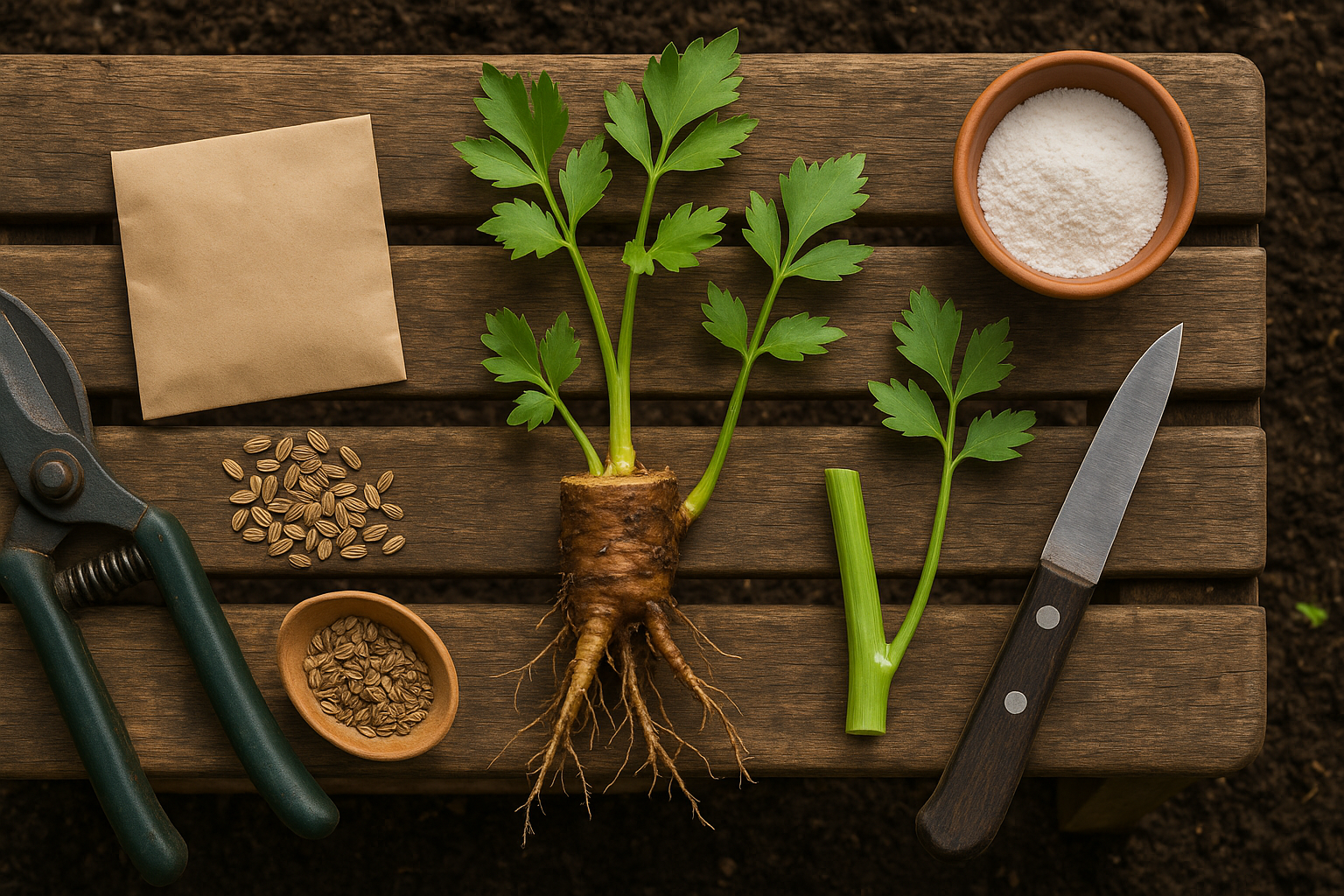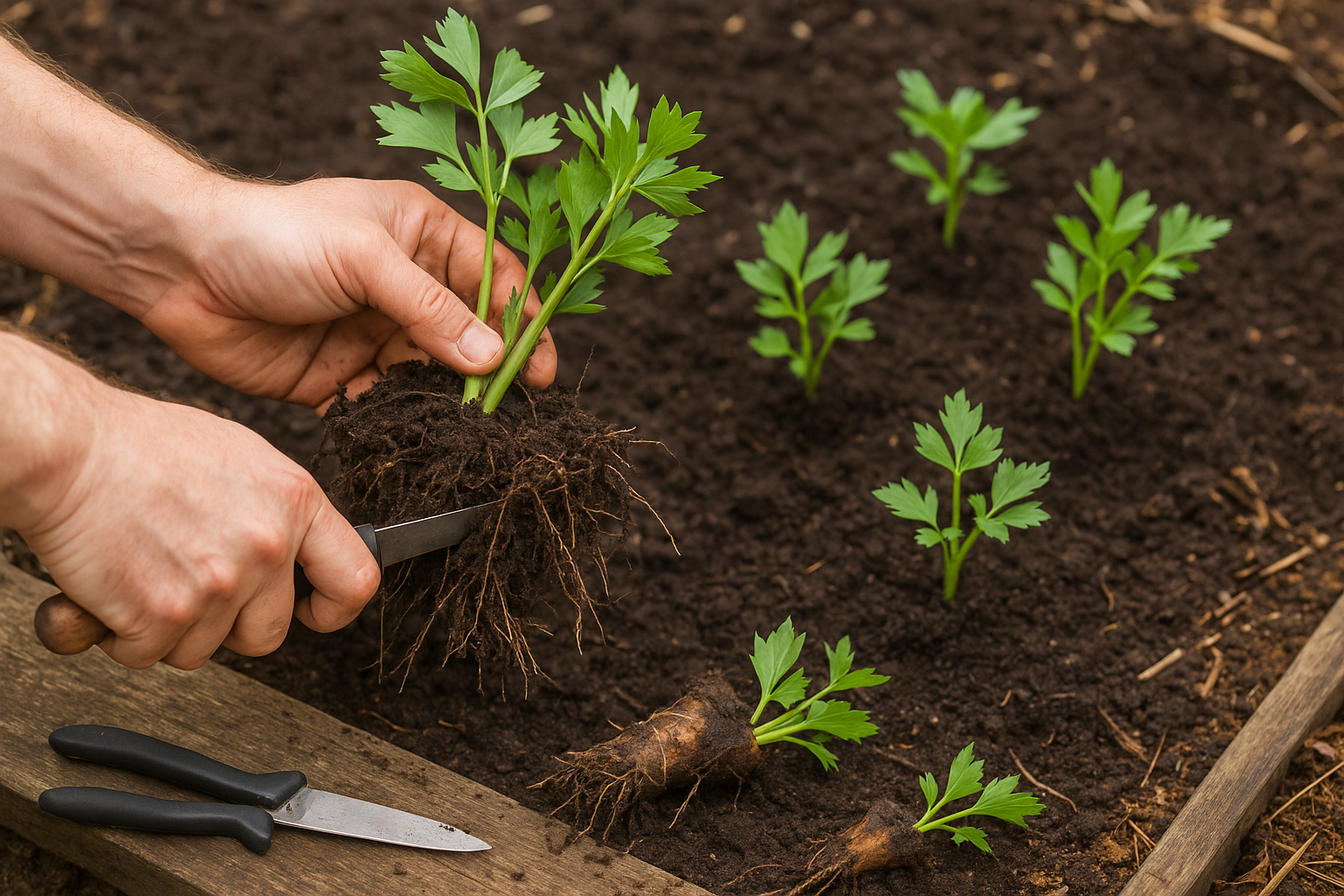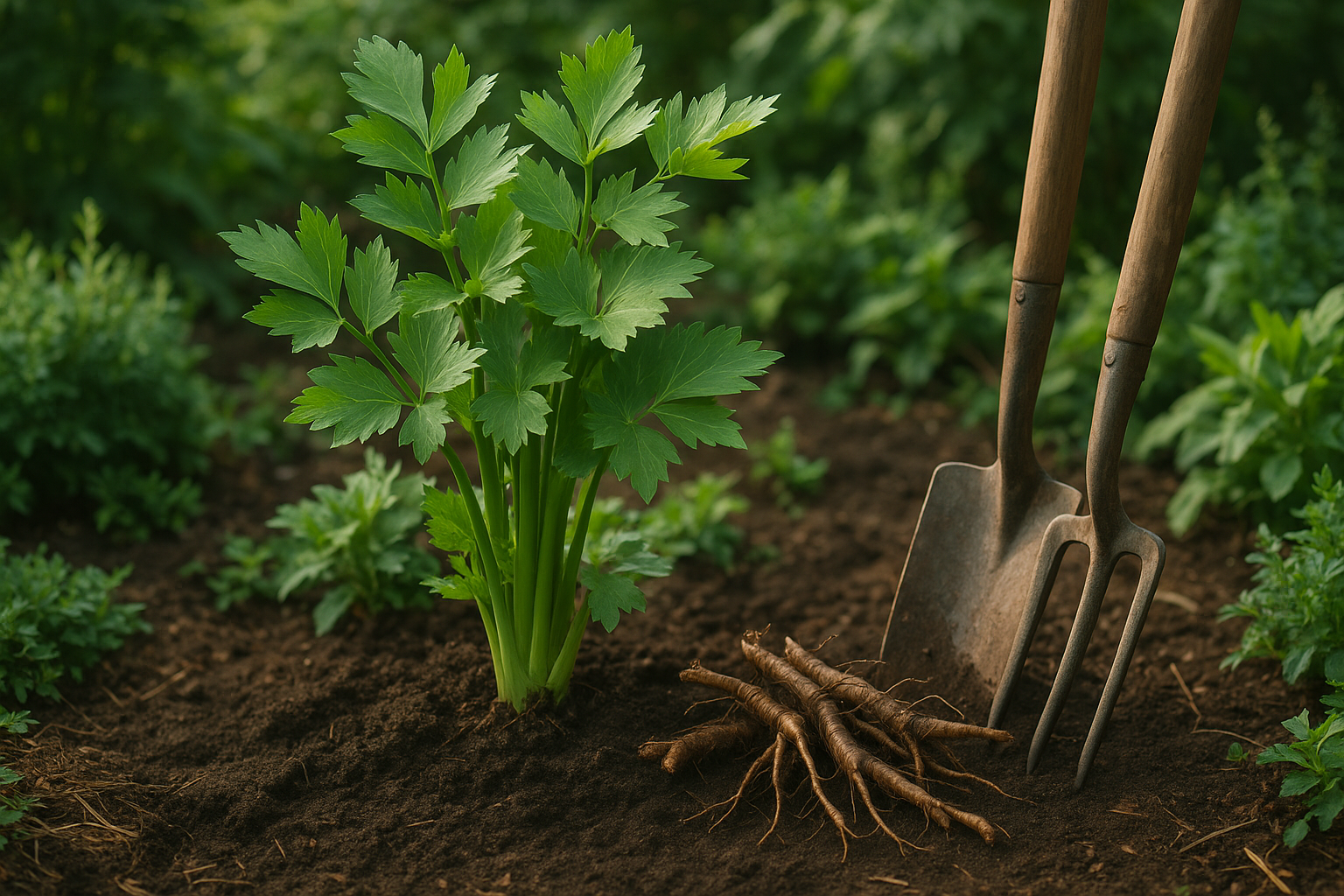Introduction
If you’re looking to regrow lovage from roots, you’re not alone—this versatile herb is cherished for its robust celery-like flavor and its ability to elevate soups, stews, and salads right from your backyard. Many gardeners, drawn to lovage’s rapid growth and resilience, wonder how to expand their patch without starting from seeds each year.
Propagating lovage at home is not only practical, saving time and money, but it also ensures a fresh supply whenever you need it. In this article, we’ll explore whether you can regrow lovage from cuttings or roots and guide you through the best techniques for success. You’ll find easy-to-follow, step-by-step instructions for both methods, plus real-world tips for keeping your lovage healthy and thriving—so you can enjoy an endless harvest season after season.
Understanding Lovage Propagation Methods

Propagation simply means creating new plants from existing ones, which is a valuable skill for any gardener, especially when growing herbs like lovage. Lovage can be propagated through three primary methods: starting from seeds, dividing mature roots, or taking stem cuttings.
Seeds are a common entry point because they’re inexpensive and allow you to grow many plants at once. However, they germinate slowly and unpredictably, sometimes taking up to three weeks or longer, with sprouts that can be delicate in their early growth.
Root division, on the other hand, involves splitting an established lovage plant and replanting the sections, ensuring the new plants are identical to the parent and already have a robust root system. This process is best done in early spring or autumn, and it offers a reliable way to reinvigorate older plants as well.
Stem cuttings, while useful for some herbs, tend to be trickier with lovage since the thick, hollow stems don’t always root easily. This can frustrate home gardeners hoping for fast results.
For most people growing lovage in the home garden, expert advice leans heavily toward root division as the most effective propagation method: it’s quick, produces strong plants, and lets you bypass the fussiness of seeds or the uncertainty of cuttings.
If you’re just starting out, try dividing the roots of an established lovage clump in your garden—dig it up, gently tease apart sections with healthy roots and shoots, and plant them about 18–24 inches apart. Keep the soil moist, and you’ll enjoy thriving lovage plants with much less waiting and worry.
Regrowing Lovage from Root Divisions

Regrowing lovage from root divisions is an easy and effective way to expand your herb garden with healthy, robust plants. Start by timing the process for early spring or late fall, when the plant is dormant and less stressed by heat. These periods help minimize transplant shock.
Begin by digging up a mature lovage plant using a garden fork or spade, taking care to lift the root ball gently to avoid breaking healthy roots. Shake off excess soil and look for natural separations in the root system, or use a sharp, clean garden knife or pruners to slice through thicker roots. Each division should have at least one good bud or shoot and a healthy cluster of roots.
Replant each root section promptly into well-draining, enriched soil, spacing them about two feet apart so the new plants have room to grow. Water thoroughly after planting and keep the soil consistently moist, but not waterlogged, during the first few weeks.
To avoid transplant shock, keep newly divided plants out of direct afternoon sun for a few days and trim back some foliage to reduce stress on the roots. If you notice slow growth, check that the divisions are not planted too deep and that the soil stays damp. Mulch around the base to conserve moisture and suppress weeds.
Remember that patience is key—lovage may take a few weeks to show new shoots above ground. If leaves wilt or yellow, it could be a sign of root stress or water imbalance, so adjust your care routine accordingly. With attentive handling and the right conditions, your lovage divisions will establish quickly and provide you with a fragrant, perennial addition to your garden.
Growing Lovage from Stem Cuttings
Lovage is most commonly grown from seed or by dividing mature plants, but you can also try propagating it from stem cuttings. Keep in mind, the success rate tends to be lower than with other herbs—usually around 30-50%. To improve your chances, choose healthy, non-flowering stems in spring or early summer.
Snip a 4 to 6-inch segment with several leaf nodes, ideally from the middle of the plant. Remove the lower leaves, dip the cut end in rooting hormone powder, and plant it in a pot filled with a light, well-draining mix—like half perlite and half seed-starting compost.
Keep the soil moist but not soggy, and cover the pot with a loose plastic bag or cloche to maintain humidity. Place your pot in bright, indirect light, avoiding direct sun which can cause wilting. Check moisture daily and mist as needed.
It generally takes three to five weeks for roots to form—gently tug the cutting to feel resistance, which signals rooting. Once rooted and growing new leaves, gradually expose your lovage to outdoor conditions if you plan to transplant it.
With patience and attentive care, you may have a few thriving new lovage plants ready for the herb garden by midsummer.
Caring for Newly Propagated Lovage Plants
Caring for newly propagated lovage starts with getting the basics right—watering, sunlight, and soil quality are all crucial to help these young plants thrive. Keep the soil consistently moist but not soggy; check the top inch of soil with your finger, and if it feels dry, it’s time to water. Make sure the pot or garden bed drains well to prevent root rot.
Lovage prefers full sun, but young transplants can benefit from a little afternoon shade in hot climates to prevent wilting. Choose a rich, loamy soil that’s well-amended with compost to give the roots plenty of nutrients.
To encourage robust root systems, avoid crowding—space young lovage at least 12–18 inches apart. Mulching around the base helps retain moisture and suppresses weeds that compete for nutrients.
To stimulate sturdy shoot and leaf growth, pinch back the growing tips once the plant is about six inches tall; this encourages bushier growth rather than leggy stems.
Watch for common pests like aphids and slugs, which can be managed with hand-picking or a gentle spray of soapy water. Fungal diseases, such as powdery mildew, can occur if soil stays too wet, so water in the morning and avoid splashing the leaves.
Early attention to these simple steps will set up your young lovage plants for success, resulting in a thriving, flavorful addition to your herb garden.
Troubleshooting and Frequently Asked Questions
When propagating plants, it’s normal to hit a few bumps—wilting, slow growth, or even total failure of some cuttings. Wilting can happen if cuttings dry out or roots haven’t formed yet. Make sure to keep humidity high by covering your cuttings with a clear plastic bag, and check soil moisture regularly so it stays damp but not soggy.
If you see slow growth, be patient—most cuttings take 2-6 weeks to root, and growth often speeds up after the first roots appear. For cuttings that just don’t take, try using a rooting hormone or switching to water propagation, which lets you easily monitor root development. Speaking of water propagation, many plants like pothos and philodendron root well in water—just be sure to refresh the water every few days.
If you’re deciding between division and cuttings, divisions typically work better for mature, clumping plants, while cuttings are great for vining or stem-rooting varieties.
Still stuck? Local plant groups, nursery staff, and reputable online forums can be awesome resources for step-by-step advice. Don’t be discouraged—propagation includes trial and error. Every attempt is a learning opportunity!
Conclusion
Lovage can be regrown from both root divisions and cuttings, making it a versatile herb for home gardeners. Whether you choose to divide a mature plant’s roots in early spring or take stem cuttings in late summer, both methods are simple and effective with the right care. Don’t hesitate to give propagation a try using the tips outlined above—you might find it’s easier than you think.
As you expand your herbal garden, consider pairing lovage with carrots or beans as companion plants. You can also explore best practices for harvesting its fragrant leaves throughout the season to enjoy the freshest flavor.
